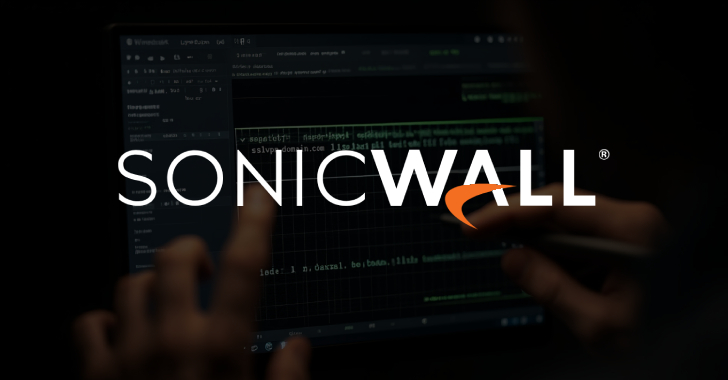
Beyond Contracts: Why Standardized Vendor Integration is Critical for Data Center Security
Introduction
Contracts alone are not enough to ensure data center security when working with third-party vendors. While service level agreements (SLAs) define performance expectations, they do not guarantee seamless, secure, and compliant vendor integration into a data center’s ecosystem.
Without a standardized vendor integration process, organizations risk:
- Cybersecurity vulnerabilities from poorly managed third-party access
- Compliance failures due to inconsistent security controls across vendors
- Operational inefficiencies caused by misaligned vendor workflows
- Service disruptions from integration conflicts between vendor solutions and internal infrastructure
To prevent security gaps and compliance risks, data centers must go beyond contracts and implement standardized vendor integration policies that align all third-party relationships with IT, security, and operational requirements.
This article explores why standardized vendor integration is critical for data center security, the risks of failing to enforce integration standards, and best practices for securing vendor partnerships.
The Risks of Poor Vendor Integration in Data Centers
Third-party vendors introduce hardware, software, and services into data centers, but without a structured onboarding and security process, these integrations can create significant vulnerabilities.
- Cybersecurity Risks from Uncontrolled Vendor Access
🔐 Problem: Vendors often require access to networks, applications, and infrastructure, but improper access controls can lead to security breaches.
🔺 Common Issues:
- Vendors maintaining excessive privileges long after a project ends
- Lack of multi-factor authentication (MFA) for vendor logins
- No real-time monitoring of vendor access activities
🛠 Solution:
✅ Enforce role-based access control (RBAC) and limit vendor permissions
✅ Require vendors to use secure, company-provided authentication methods
✅ Monitor vendor activity in real time and audit logs regularly
🔹 Example: A major cloud provider suffered a security breach when a vendor account was compromised, allowing attackers to exfiltrate sensitive customer data.
- Compliance Failures Due to Vendor Security Gaps
⚖️ Problem: Vendors must comply with ISO 27001, SOC 2, PCI DSS, HIPAA, and other data center regulations, but many vendors lack the necessary security controls.
🔺 Common Issues:
- Failure to encrypt data transfers between vendors and the data center
- Lack of documented security policies or incident response plans
- Vendors using outdated or non-compliant software/hardware
🛠 Solution:
✅ Require vendors to complete compliance audits before onboarding
✅ Enforce encryption standards for all vendor-related data transactions
✅ Terminate vendor contracts if security and compliance standards are not met
🔹 Example: A financial services company failed a regulatory audit after discovering that a vendor stored customer data in an unencrypted format.
- Misaligned IT & Security Protocols Between Vendors and Internal Teams
🛑 Problem: Vendors often use different security tools, logging mechanisms, and incident response frameworks, making it difficult for internal IT and security teams to detect and respond to threats.
🔺 Common Issues:
- Vendors using security tools that do not integrate with the data center’s security stack
- Lack of shared monitoring and alerting capabilities
- Slow vendor response times during security incidents
🛠 Solution:
✅ Standardize security tools and logging frameworks across all vendors
✅ Ensure vendors integrate into the data center’s Security Information and Event Management (SIEM) system
✅ Conduct joint security drills to test vendor response times
🔹 Example: A data center suffered extended downtime after a cyberattack because its vendors did not have a unified security monitoring process, delaying containment efforts.
- Operational Disruptions from Poor Vendor Interoperability
🔄 Problem: If vendor solutions are not designed to integrate with a data center’s existing infrastructure, this can cause network failures, compatibility issues, and downtime.
🔺 Common Issues:
- New vendor hardware conflicting with existing network configurations
- Cloud vendor API mismatches causing service outages
- Unclear vendor support escalation paths during system failures
🛠 Solution:
✅ Conduct vendor compatibility testing before deployment
✅ Standardize API and cloud service integrations
✅ Require vendors to maintain documented escalation procedures
🔹 Example: A global e-commerce platform lost millions in revenue when a vendor’s cloud service failed to integrate with its authentication system, preventing customers from logging in.
Best Practices for Standardizing Vendor Integration in Data Centers
- Implement a Vendor Security & Compliance Framework
📋 Develop a structured process for assessing vendor security, compliance, and operational standards before integration.
✅ Require vendors to undergo security and compliance evaluations
✅ Define clear security protocols for vendors handling sensitive data
✅ Regularly audit vendors to ensure continued compliance
- Use a Standardized Onboarding & Access Management System
🔑 Control vendor access from day one to prevent security risks.
✅ Create a vendor access management policy that includes role-based access control
✅ Limit vendor permissions based on the principle of least privilege
✅ Automatically revoke vendor access when contracts end
- Ensure Vendor Systems Integrate with Security Monitoring Tools
🔍 Standardize security monitoring across vendors to ensure real-time threat detection.
✅ Require vendors to send logs to the data center’s SIEM system
✅ Mandate security patching schedules for all vendor-supplied systems
✅ Test vendor response times in simulated security incidents
- Standardize API & Cloud Integration Processes
🔗 Create a unified framework for vendor software, API, and cloud service integration.
✅ Define standardized API security policies for third-party services
✅ Ensure vendors use encrypted data transfers and secure authentication
✅ Validate all vendor software for security vulnerabilities before deployment
- Conduct Regular Vendor Performance & Security Audits
📊 Monitor vendor compliance and performance to ensure continuous improvement.
✅ Review vendor security logs and access history monthly
✅ Hold vendors accountable for SLA violations
✅ Terminate partnerships with vendors that fail to meet security standards
Conclusion
Data center security cannot rely on contracts alone—vendors must be integrated into IT and security frameworks using standardized processes to prevent breaches, compliance failures, and operational inefficiencies.
Key Takeaways:
✅ Vendor onboarding must include security, compliance, and interoperability testing.
✅ Access control must follow Zero Trust principles to prevent vendor security risks.
✅ API, cloud, and hardware integrations must follow standardized protocols.
✅ Continuous monitoring and auditing are necessary to ensure ongoing vendor compliance.
✅ Poor vendor integration can lead to major security breaches and service disruptions.
By implementing a structured vendor integration framework, organizations can minimize third-party risks, enhance security, and ensure seamless operations across their data centers.
Contact Cyber Defense Advisors to learn more about our Data Center Vendor & Partner Integration Standardization Services solutions.





